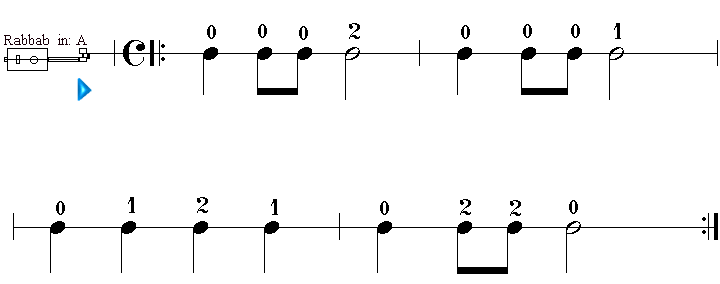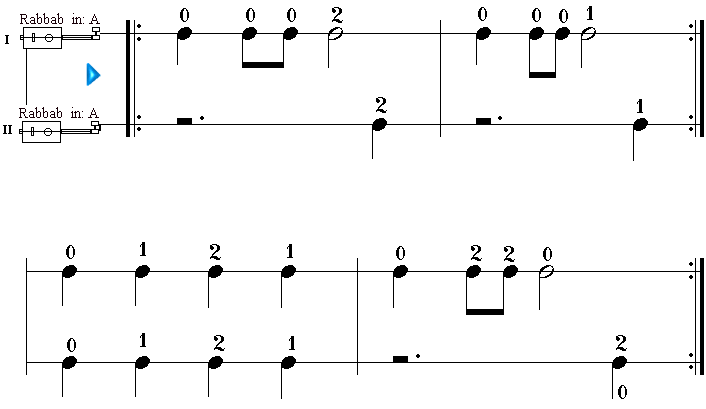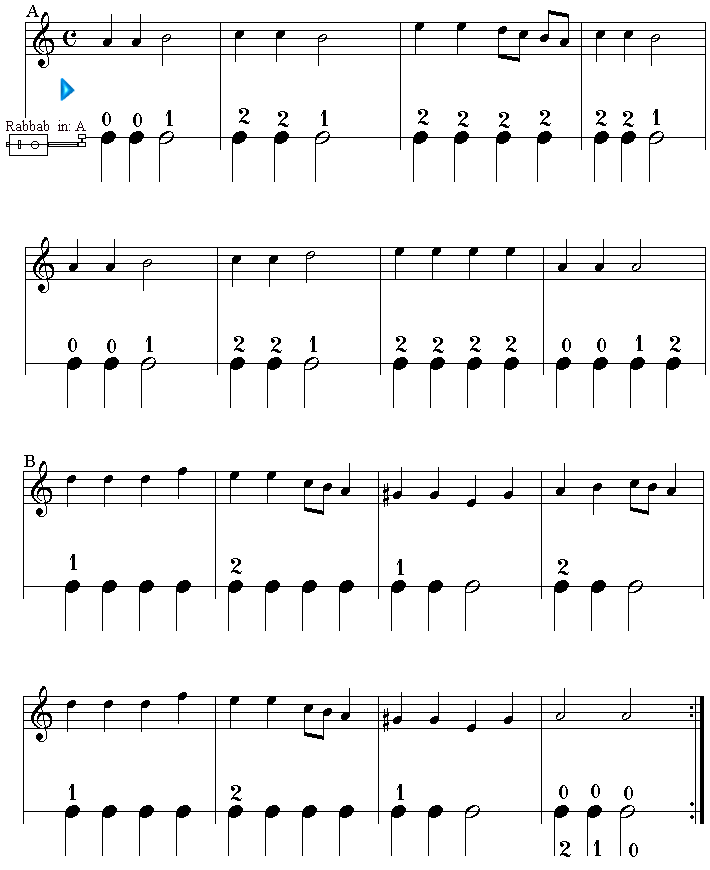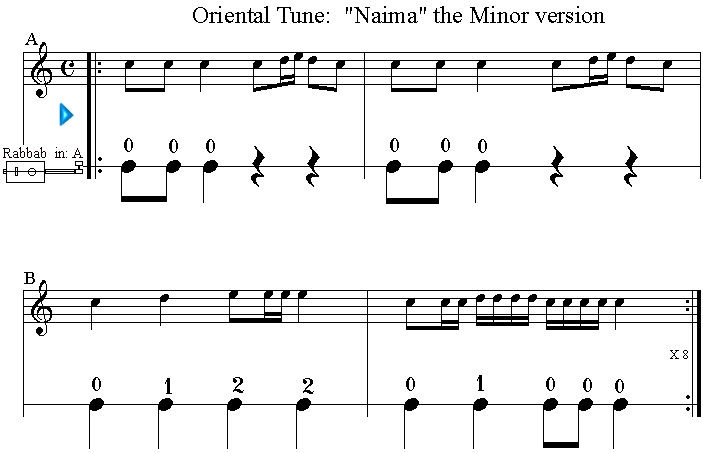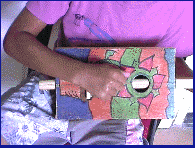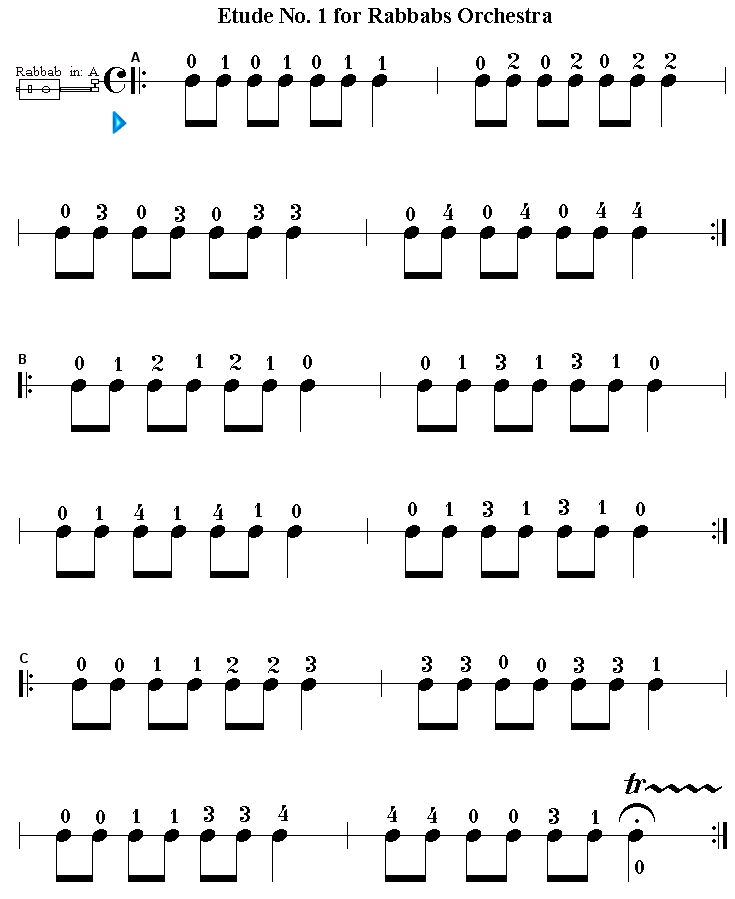MENU - INDEX - HOME
Principles
General
Teaching in a group
I. Holding Positions
1. Sitting position
2. Ancient Guitar Position
3. Left Hand
a) Placing the hand
b) Mark
and Press
4. Right Hand
5. The plectrum
II. Playing
General
1.Contents of playing
a) Open string
b) Open string
and 1
![]() c) Open
string + 1 + 2
c) Open
string + 1 + 2
2. Music Creativity
General
a) Composing
b)
Improvisation
c) Solo
playing
III. Music pieces
IV. Two strings
General
The pieces
Playing an Open string and fingers
1 and 2 [0+1+2]
1. It is necessary to first complete the stage of learning to play with the second finger.
Also it is good to go over the : "How to teach playing in a
group" chapter.
2. An assignment in pairs (or groups of three)

We can suggest the following
assignments based on these two bars:
![]() a. Play the phrase four times in a row -
together.
a. Play the phrase four times in a row -
together.
![]() b. Play the phrase one after the other
intermittently - 4 times.
b. Play the phrase one after the other
intermittently - 4 times.
![]() c. One player plays while the other tapping
the instrument and then they switch roles.
c. One player plays while the other tapping
the instrument and then they switch roles.
![]() d. Question and answer: One student plays the
phrase as it is written using 0+2, and a second student answers him but uses 1+0 instead
of the second finger.
d. Question and answer: One student plays the
phrase as it is written using 0+2, and a second student answers him but uses 1+0 instead
of the second finger.
![]() e. Playing and improvising with the teacher.
All the students play the phrase repeatedly while the teacher improvises by ear.
e. Playing and improvising with the teacher.
All the students play the phrase repeatedly while the teacher improvises by ear.
Try this Etude for: 0+1+2
